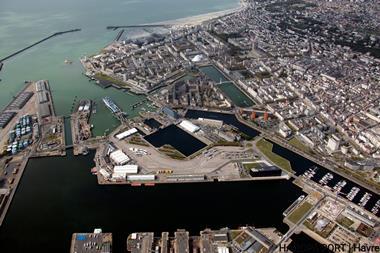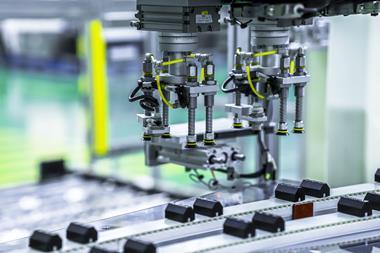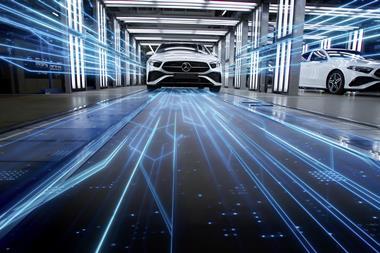China has made some radical moves to modernise its railways, but the rail services desired by the automotive industry are not here yet.
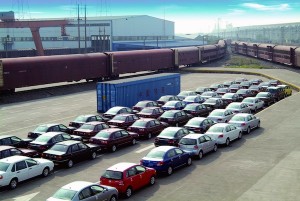 Vehicle logistics in China is dominated by trucking. While water transport by barge and short sea has done some catching up in recent years, rail is still far behind. The Chinese government is making reforms to try to increase rail freight in the country, including abolishing its railway ministry recently, but progress is slower than some would have hoped. Capacity limitation and some built-in weaknesses have made rail less attractive to manufacturers in the country, although there are many reasons to believe the potential for automotive growth on the tracks remains very high.
Vehicle logistics in China is dominated by trucking. While water transport by barge and short sea has done some catching up in recent years, rail is still far behind. The Chinese government is making reforms to try to increase rail freight in the country, including abolishing its railway ministry recently, but progress is slower than some would have hoped. Capacity limitation and some built-in weaknesses have made rail less attractive to manufacturers in the country, although there are many reasons to believe the potential for automotive growth on the tracks remains very high.
The volume for rail has already seen some impressive increases. The total number of cars handled by rail in 2013 will hit 1.2m, according to Zuo Guangyu of China Railway Special Cargo Services-Automobile, a branch of the state-owned railways specialising in automotive, who was speaking at a CFLP meeting held mid-November in Xiamen. This figure represents an increase of nearly 50% over the previous two years.
According to sources, the OEMs most involved in using rail are SAIC, FAW, GAC-Honda, Dongfeng Nissan and Changan. Anji Automotive Logistics, a subsidiary of SAIC and a leading logistics provider in the country, contributed around half of the rail business in 2012.
Despite this growth and development, rail’s share of the vehicle logistics market in China is still barely above 5%. “We’d like to see it reach 10% by 2015, but it remains to be seen if that will be possible,” says Zhang Xiaodong, a professor Beijing Jiaotong University and a specialist in transport policy.
However, the real impacts of this reform are unlikely to be seen for several years, while service levels are unlikely to reach desired levels until there is more investment in capacity and infrastructure, such as links between ports, plants and China’s inland regions.
Further capacity is expected to be released, although not immediately. Meanwhile, the top-down reform of the rail system that led to the dissolution of the Railway Ministry last March – greeted by many as a courageous step – suggests that significant change could be on the horizon. According to some experts, the separation of rail’s commercial operations from administration and the merger of the latter with the Transport Ministry is a favourable move for promoting efficiency and facilitating an integrated transport system. There have been some moves in the pipeline specific to the automotive sector. A number of rail users have even said that they notice an improvement in customer service.
A busy coastal service
For automotive, rail is used most in transporting cars between the Yangtze River Delta, the Pearl River Delta and the larger Beijing area (which includes Beijing, Tianjin and other cities nearby). The railway linking Beijing with Guangzhou (Jing-guang line) and the one connecting Beijing and Shanghai (Jin-hu line) are two of the busiest for moving vehicles, while the three cities are also the busiest departure and destination points. Along the Jing-guang line, GAC-Honda has been moving cars bound for Beijing for around a decade. Although Chery’s plants are not on either line, it now tranships its vehicles so as to use the line.
Besides these major trade lanes, rail service has the highest market share to regions where truck services are unreliable, or for very far distances, such as to China’s remote northwest regions.
High-speed slowdowns
Up to now, rail’s capacity for handling cars has been limited partly because of passenger priority in the rail network. It has long been proposed that cargo and passenger services ‘go their separate ways’ and stop sharing tracks. China’s ‘12th Five Year Plan for Railway’ laid out the aim of getting dozens of the country’s major cities connected by high-speed rail (HSR) for passengers.
“Such expansion of the intercity HSR network, when completed, should free up further rail capacity for freight transport,” comments Zhang, who was the principal author of the five-year railway plan and has also been instrumental in a number of China’s transport policies.
"The direction [of separating cargoes and passengers] has been set and we are now beginning to see the trend of freight overtaking passenger service in the use of rail" - Professor Zhang Xiaodong, Beijing Jiaotong University
According to Zhang, one of the things holding back the potential for freight is that the general public is taking more time than anticipated to switch from conventional rail services to HSR. As a result, those older services have remained longer on the same track, preventing the release of more capacity to freight, although Zhang says this is expected to change. “The direction [of separating cargoes and passengers] has been set and we are now beginning to see the trend of freight overtaking passenger service in the use of rail,” he says.
How to avoid coming back ‘empty handed’
Given the tough competition on price in China, all OEMs remain focused on cost. Except for much longer distances, rail tends to be more expensive compared to road; it is also costs more than water transport. What’s more, sources say that rail’s cost has been rising relative to road.
Part of the reason for this is that China has a number of road carriers (albeit many state-owned and tied to certain OEMs) which bid competitively during tenders; the rail monopoly, on the other hand, has long been in a position of dictating prices.
However, the ‘monopoly’ aspect to rail does not entirely explain the pricing issue. Part of the reason rail is more expensive is because, besides the coastal corridors, it often
comes back from journeys in which it carries vehicles ‘empty handed’. Road and waterways in China currently have more backload business than rail, according to an industry source, who asked to remain anonymous.
Sources say there are a number of long-distance routes in China that would be highly suitable for rail to move with regular backloads, which would help reduce costs. However, with road services already in place along these routes, few companies are considering the switch to rail. Part of the problem might be down to vested interests; an OEM might be obliged to use the truck fleets of its in-house provider first before considering alternative modes, for example. Even without these pressures, many OEMs and providers prefer road’s advantages, including faster delivery, door-to-door convenience, more guaranteed capacity and the lower rates it already offers.
Rail’s inability to compete with road is one reason why a large amount of the vehicles moving by rail are headed for remote regions where conditions are often bad for road haulage. According to a source at a logistics provider, who asked to remain anonymous, it is estimated that about half of the rail business goes to those “difficult routes”.
Although still lacking a successful backload business, an anonymous source at a global OEM says it would be “win-win” if costs could be reduced through collaboration with other carmakers. Meanwhile, highly competitive joint venture carmakers tend to see logistics as strategic support, which makes some more reluctant to share capacity (although this appears to be changing). On the other hand, most are keen for rail to develop as a means of transport and so may eventually accept working with competitors.
A more market-driven approach
Although it still struggles to compete on costs, sources say that rail should be given credit for improving services and accountability, even if they are not quite to the industry’s desired levels yet. During 2013, rail reforms to cargo service have been in full swing, Zhang says. One important change he points to is a shorter notice period for booking. Whereas it used to be necessary to book 30 days in advance, the railways now accept ten days notice. According to Zhang, the railways are even working towards one day, although he admits that would be difficult for moving vehicles.
Other changes include more regulated and transparent charges and the cancellation of many fees. One thing specific to vehicles, Zhang reveals, is they have been classified as one of the ‘important’ cargo types that will have block train service available at higher speeds. Although not quite yet implemented, Zhang notes that the option is on offer and it’s only a matter of time before it clicks with market. "The most noticeable change taking place in rail is its increasingly strong market awareness,” Zhang says.
A source at a Chinese logistics provider delivers almost the same message, saying that he sees a more responsive approach to business by the railways, including allowing payments after delivery, giving more attention to delivery time, compensating for delays and damages, and taking a more proactive approach in general. While the source asserts that this is not true everywhere, the situation is better than in the past when delays were often attributed to force majeure, damages were not acknowledged and OEMs or logistics providers had to pay for rail before the trips were made. While the operational progress for rail has been happening slowly, market-friendly measures appear to be more visible.
Inconsistent service
Although improvements are noted, there are significant contrasts in service across China. While providers have rated the rail performance along the coast relatively highly, the service to remote regions is considered poor. The service and management of railways appears to be too fragmented and regionalised as well. A client who knows the rail office well at a departure point may not necessarily know the arrival office; and because the two offices don’t communicate enough, the client is likely to be left unable to find someone to address any urgent issues.
Bad weather can also affect rail services. Along with transport delays, it may take ages to unload cars after arriving at a destination. The railways also suffer from seasonal capacity cuts. During holidays, cargoes have to make way for more passenger services. “Things are better now, but I cannot say there has been a significant change in this,” says Zhang.
However, Zhang says that the railway is increasingly likely to give priority to cargo with more ‘value added’ and those companies with which it has long term contracts – both of which tend to apply to passenger cars.
Building more rail links
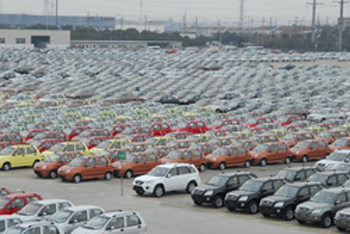
Currently, Dalian is the only port in the country that has a rail link, connecting cargo to China’s northeast. The larger and more frequented ports, including Shanghai, Tianjin and Guangzhou lack these inland connections (although Shanghai has a river link). The government has long encouraged sea-land intermodal transport, but progress has been slow both in terms of administration and in capacity developments.
Looking further ahead, however, with competition escalating between ports, any that introduced a rail link would be the first to reach the fast-growing hinterland regions, says Zhang. He believes there could be a chain reaction – once one port initiates the link, others would follow. According to sources, CPA-RoRo has already been sizing up the possibility of building such a link. Zhang believes that ports will act sooner on this investment once rail capacity for cargo has increased.
“When rail capacity catches up, so will the ports’ willingness to connect,” notes Zhang. There could also be more public investment in rail infrastructure that relates to automotive. Zhang says that shortly before the Ministry of Railways disappeared into history, it had announced that many rail yards would be upgraded in future, and that for those facilities that deal with vehicles there should be dedicated terminals to accommodate such specialised handling.
A long, long way to go
The automotive industry has many reasons to expect a lot from rail. While trucking is cheap and flexible, China’s immense size and varied road conditions give rail clear advantages in some places, but as with any mode of transport, cost and service are always the two most important points, says Chen Chunqing of Chery International. Here rail still seems to be well behind road.
Some in the sector say that rail is held back in China in part because trucking prices are actually too low, undercutting any rail investments. How eventually the government addresses such issues could impact rail’s future growth. Indeed, announcements in late 2013, following the ‘Third Plenum’ in Beijing, indicated that liberalising fuel and transport prices would be on the government’s agenda for reform, but it is not yet clear exactly how this change would be applied.
Perhaps a more positive point of view is that road carriers in China increasingly appreciate the role that rail will play in vehicle logistics; many, such as Anji, already work or intend to work more with rail as its capacity develops, according to Zhang.
Such development of the rail system has been going on for a long time, although sources indicate that, given the complexity of reform in China, such a slow transition is to be expected. There is no denying things are looking up for rail, although it still has some distance to travel.
Additional reporting by Christoper Ludwig


















